California stagecoach history is filled with colorful characters. The infamous stagecoach robber Black Bart and the famous stagecoach driver, commonly referred to as whip, Charley Parkhurst are but two. Stagecoaches transported people and cargo and appeared with the California Gold Rush and California’s statehood.
Thank you for reading this post, don't forget to subscribe!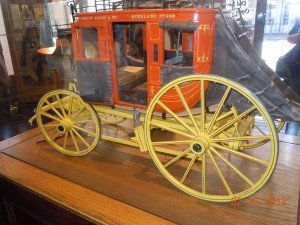
California was no different than other regions of the country. The stagecoach was replaced little by little by the expanding railroad. The iron horse offered much more speed and comfort than even the rugged and handsome Concord coach.
San Juan Bautista, the Last Great Stagecoach Hub
South of San Francisco and about 40 miles north of Monterey California is the settlement of San Juan Bautista, during Spanish times called simply San Juan. The site of Mission San Juan Bautista, the fifteenth of the twenty-one Spanish missions, and located along the El Camino Real, San Juan was a busy hub of stagecoach activity just prior to the time when the Southern Pacific Railroad began expanding further down the coast toward Los Angeles and San Diego.
An interesting fact about the old mission is that when you visit it today you’ll hear the toll of the original mission bells from the late 1700’s.
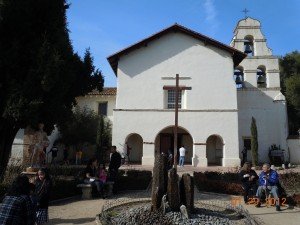
San Juan Bautista was the site where a passenger might arrive by train and transfer to a stagecoach to continue his or her journey further south.
The busiest places in San Juan Bautista were the Plaza Hotel and the Plaza Stables directly on the town plaza. An interesting side note if you travel to San Juan Bautista is that the plaza is the only remaining Spanish plaza in California. The plaza is just where it was when the town was built by the Spaniards. Other California plazas have been long gone and paved over or plowed over. It’s a real treat to visit.
The plaza area and several of the surrounding structures are now a part of the San Juan Bautista State Historic Park. The 1859 hotel, built over old Spanish barracks, and the livery stable are a part of the state park.
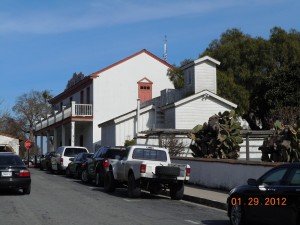
The Plaza Hotel
The Plaza Hotel in San Juan Bautista California was opened in 1859 by an Italian immigrant named Angelo Zanetta. The structure was built by the Spanish in 1814 and Zanetta turned it into a hotle in 1859. It was opened as a one story hotel and later a second story was added. The Plaza Hotel was well known for it’s fine food and it’s list of guests came from around the world.
The Livery Stables
Up to eleven stagecoaches left San Juan Bautista each day and the livery stable was a busy place. The livery stable also served as the blacksmith shop.
You can just imagine the activity around the livery stables during the 1860’s and early 1870’s with these many teams of horses being harnessed and unharnessed daily.
Today, the tourist to San Juan Bautista can see the exhibits of old wagons and stagecoaches.
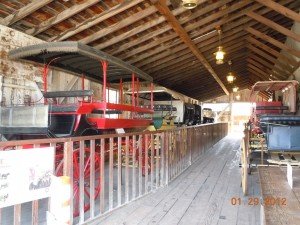
Bypassed By The Railroad
The fate of San Juan Bautista as a growing settlement was at the hands of the Southern Pacific Railroad. The town’s fortunes were dealt a severe blow when the railroad bypassed the town beginning in 1876 and through Hollister instead, about ten miles to the east.
The Stagelines Slowly Vanish
Stagecoach travel along the California coast receded at about the same rate that the Southern Pacific completed rail lines to the south. By the year 1877 the Southern Pacific controlled about 85% of all California rail traffic. At the same time the Southern Pacific was engaged in a project to extend a transcontinental route eastward from Yuma. Competitors who also wanted to take advantage of this southern route across the country included the Texas & Pacific Railroad out of going west out of Dallas and the Santa Fe Railroad. As it turned out, the Southern Pacific prevailed.
The links below will take you to additional articles you may enjoy…
Juan Bautista de Anza and the Founding of San Francisco
California and the Old Spanish Missions
Some excellent books regarding the famous California stagecoach routes include Stagecoaching on the California Coast: The Coastline Stage from Los Angeles to San Juan by Maury Hoag…The Golden Road: The Story of California’s Mission Trail by Felix Riesenberg…Cockeyed Charley Parkhurst: The West’s Most Unusual Stagewhip by Craig McDonald.
The Last Stagecoach Line
In 1901 the rail line was completed between San Francisco and Los Angeles. This marked the end of the California coastal stagecoach service.
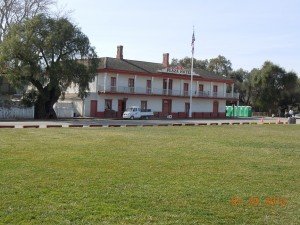
Today, several communities have made the effort to commemorate the stage routes with markers. One good example of this are the signs placed between Santa Barbara and Los Olivos. This is a forty mile stretch of the old stagecoach trail. One of the remaining stagecoach stops you can visit today in this section is the Cold Springs Tavern. The address is 5995 Stagecoach Rd, Santa Barbara.
The stagecoach route north to south generally followed the El Camino Real, the old Spanish highway of which San Juan Bautista was located. Parts of U.S. Hwy 101 today still follow this path and others do not.
Another section of the old stagecoach route you can explore today is the Old Santa Susana Stage Road located at the Santa Susana Pass State Historic Park. Take a hike today and you may still be able to see the wagon ruts on the Devil’s Slide section of the trail. This area is also included on the National Register of Historic Places. The park is located in Los Angeles County where the Santa Susana Mountains join the Simi Hills.
(Article and photos copyright 2013 Trips Into History)
